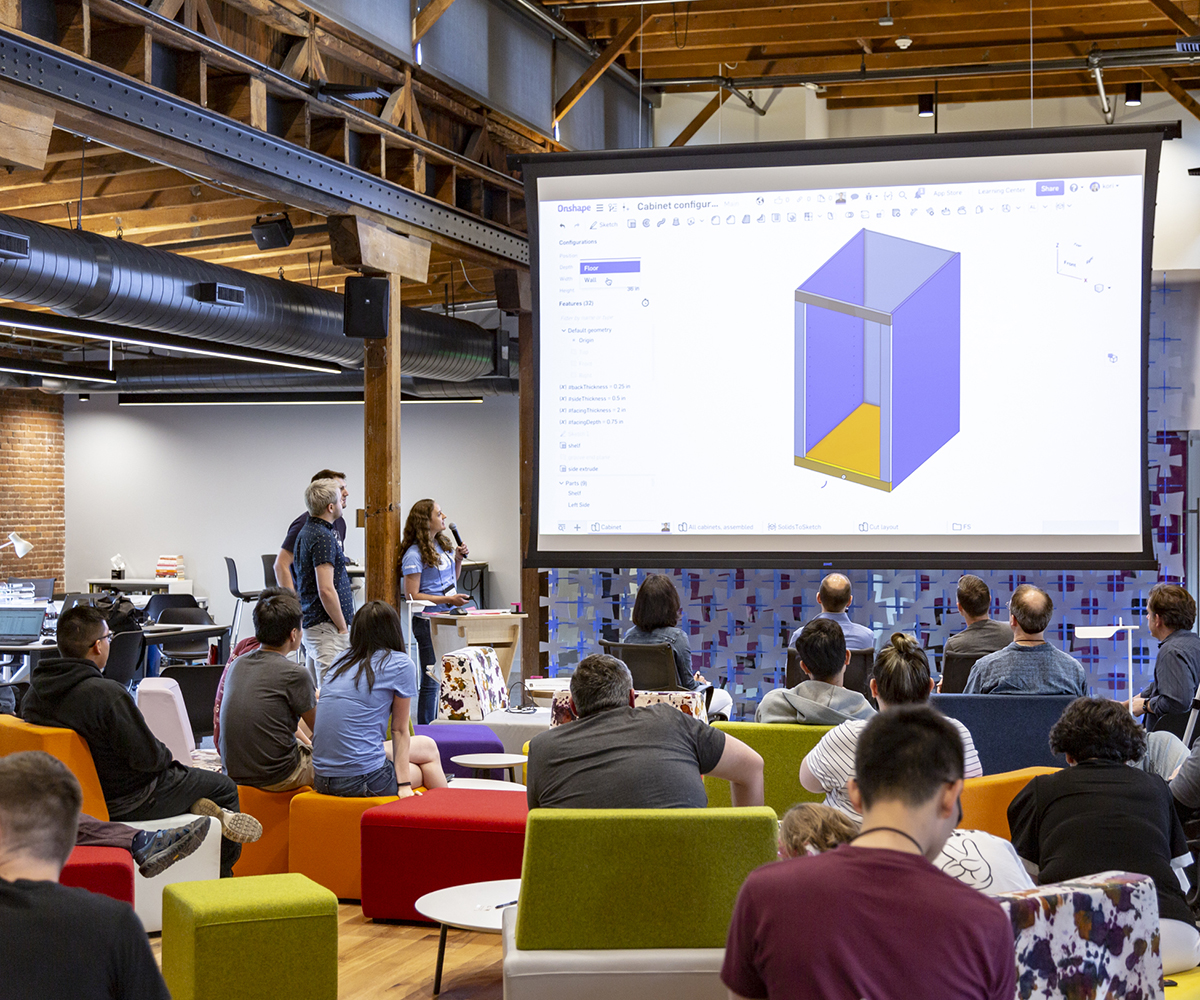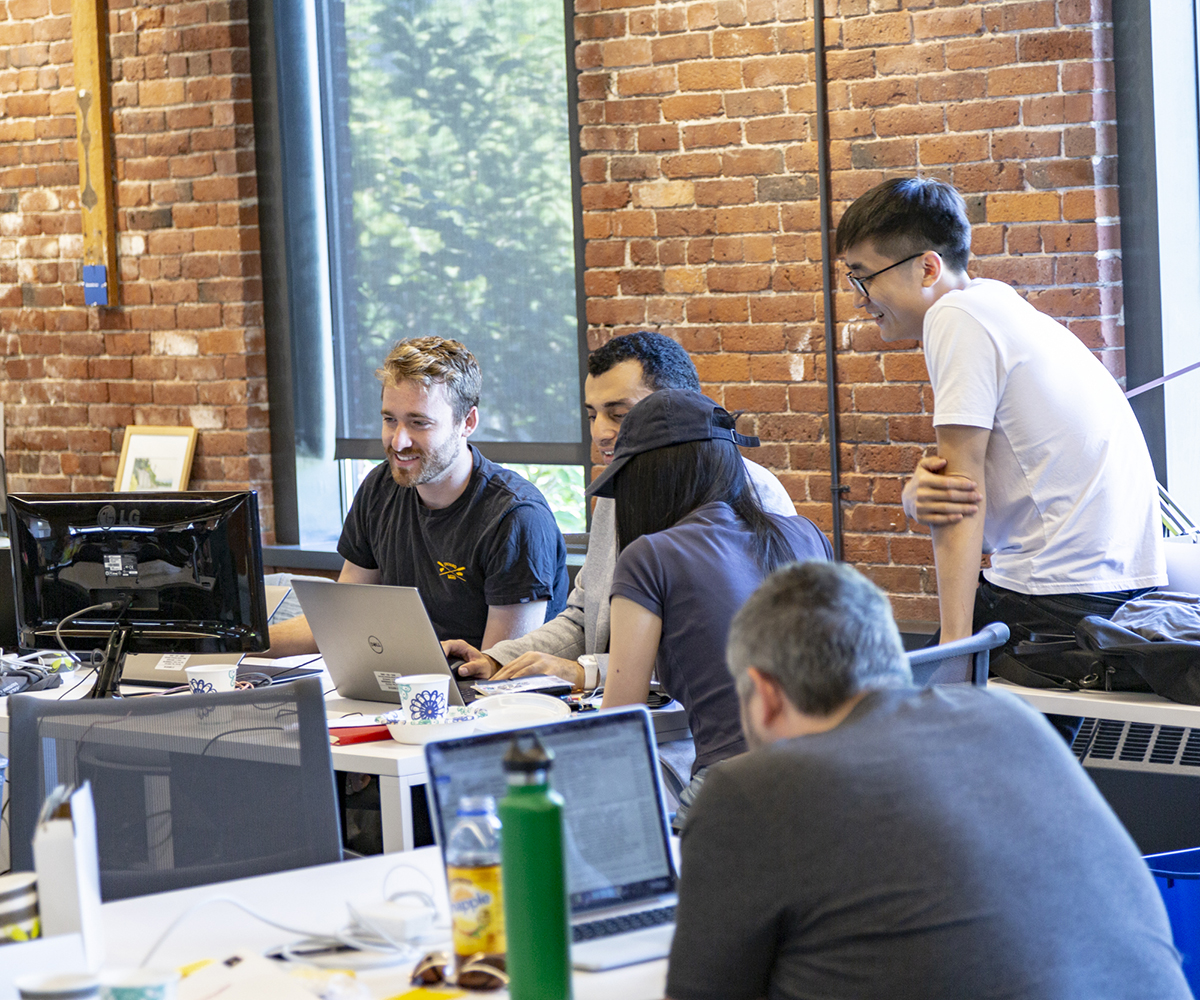August 7, 2018
Incubator Hosts beyondAEC Hackathon
This year, the Incubator at Sasaki hosted the second annual beyondAEC Hackathon and Symposium, led by Sasaki senior associate Brad Prestbo and Kyle Martin of Gensler. The 24-hour event focuses on developing new approaches that propel the AEC industry beyond current, less-intuitive or time-consuming workflows. This year’s hackathon drew over 60 participants from across the country, representing many academic and occupational backgrounds.
Accompanying the hackathon, the first annual beyondAEC Symposium featured four speakers from various industries: Chris Mackey, building scientist at Payette and Co-Founder of Ladybug LLC; Danil Nagy, principal research scientist at The Living, Autodesk; Marcy Ostberg, Director at the City of Boston Mayor’s Housing Innovation Lab; and, Lorenzo Villaggi, designer and research scientist at The Living, Autodesk.
Following the symposium, participants worked in small groups to develop tools that lead to better design decisions; the tools ranged from software plug-ins to complex data visualizations.
Awards were given to five teams for each of the following categories:
Best Use of Data: Palette, tools to help architects explore costs associated with design models.
Most Impressive Use of Technology: Hypar-pro-duct-ive, a tool to help visualize HVAC runs in schematic design.
Best Cross-Discipline Hack: Seagull, a tool to help ingest city data and make urban planning diagrams easier.
Most Practical: truevis, a website that allows designers to search for Dynamo results.
Judges’ Choice: Design Explorer Lite, a simplified version of the design explorer with sliders.


The Incubator at Sasaki offered the perfect accommodations to foster community building and cross-team collaboration for this year’s Hackathon,” Prestbo said of the space. “During our feedback session at the end of the event, folks shared how excited they were about the space.”
This event would not have been possible without the committed support of several volunteers from throughout Sasaki: John Campbell & Sam Lee for setting up the facilities; Sam Pease and the graphics team for event branding; the IS team for tech support; Matthew Arielly for event photography; and Hugo Martinez, David Morgan, Jay Nothoff, Chris Winkler, and Phyllis Zhou who stayed late into the night to provide support to the teams. Lastly, the Sasaki Foundation is pleased to have donated use of the space.
Below is a comprehensive list of the tools developed at the second annual hackathon:
Palette: Tools to help Architects explore cost associated with design models *Best Use of Data Award
Design Explorer Lite: A simplified version of the design explorer with sliders *Judge’s Choice Award
J3lly: A quick presentation tool for RhinoHypar-pro-duct-ive: A tool to help visualize HVAC runs in schematic design *Most Impressive use of Technology Award
truevis: A website that allows you to search for dynamo nodes *Most Practical Award
Seagull: A tool to help ingest city data and make urban planning diagrams easier and quicker *Best Cross-Discipline Hack Award
Frixel: A finite element analysis tool easy enough for a 5 year old to use
Produce: A tool to help layout millwork into exploded sheets for digital fabrication purposes
Area Plan Helper: A tool to generate BOMA style reports automatically from Revit plans
VLAD: Getting site objects to move in virtual reality.
Edigen: A tool to help generate random design options for consideration
